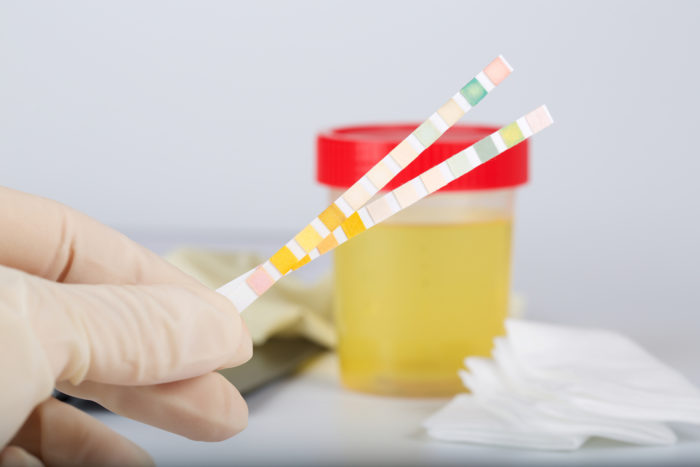Contents:
- Medical Video: Kidney Disease: Understanding Your Lab Values
- What is a urine test?
- What is the function of a urine test?
- What are the types of urine tests?
- Visual examination
- Microscopic examination
- Dipstick test
Medical Video: Kidney Disease: Understanding Your Lab Values
There are various tests that can be done to measure how well the components in the body work. Starting from skin tests to detect allergies, blood tests, creatinine testing in the blood, to urine tests. Yes, urine tests can help detect if there are disorders of the body's organs. In fact, urine tests are also commonly used to analyze the presence of drugs in the blood. In order to understand more about urine tests, see further reviews below.
What is a urine test?
As the name implies, urinalysis or urine test is a method of examination using urine (urine) to detect any disturbances in the body. Normally, healthy urine is identical to light yellow. The urine color will change if it turns out that something is wrong with the function of your body's organs.
Urinalysis is also one part of a routine health check. Here, the results of a urine test will show the initial symptoms of a particular disease. Be it kidney disease, liver disease, diabetes, and so on.
What is the function of a urine test?
The urine production process does not just happen, but involves the work of the kidneys, ureters, bladder and urethra. All these parts are referred to as the urinary tract with a role as a filter for body waste and regulating the balance of water, electrolytes, proteins, acids, and other substances in the body.
If there is damage to the body's components, it will automatically affect the content, volume, color, and texture of urine. Well, urinalysis does its job to assess changes in urine.
Some of the goals of urinalysis are:
- Check the overall health of the body, because it is often part of a routine health check.
- Helps diagnose certain medical conditions such as urinary tract infections (UTI), polycystic kidney disease, kidney failure, kidney inflammation, and others. Complaints of symptoms that you experience, including abnormal abdominal pain, continuous back pain, pain when urinating, there is blood in the urine, or other problems can also be detected.
- Monitor disease progression as well as the course of the treatment process, for example in kidney failure, diabetic nephropathy, urinary tract infections, and others.
- Assess kidney function before surgery.
- Monitor the development of abnormal pregnancies, including dehydration, preeclampsia, gestational diabetes, and so on.
What are the types of urine tests?
As long as the urinalysis takes place, your urine sample that has been placed in the container will be examined in the following ways:
Visual examination
Visual examination is done by observing the appearance of urine directly. Starting from the level of clarity, the presence or absence of smell, to the color of urine. A cloudy and smelly urine can indicate a problem in your body.
Microscopic examination
Unlike the visual examination that detects directly, microscopic examination involves a microscope to observe urine more clearly. Important things that are observed further are:
- Abnormalities in white blood cells (leukocytes), which indicate an infection.
- Abnormalities in red blood cells (erythrocytes), are a sign of kidney disease, blood disorders, bladder cancer, blood disorders, and other medical conditions.
- The presence of bacteria or yeast (fungi) as a sign of infection.
- Crystals that indicate kidney stones.
- Large numbers of epithelial cells can be signs of tumors, infections, kidney disease, and others.
If the amount of these components in urine is too much, further investigation is needed to make sure more.
Dipstick test
A dipstick test is a urine check using a thin plastic stick inserted into your urine sample. Plastic sticks will change color if there are certain substances with excessive levels contained in urine.
This method will help detect a number of things, such as:
- Acidity (pH), abnormal acidity indicates a problem with the kidneys and urinary tract.
- Concentration or thickness of urine, the thicker the urine means the less fluid the body gets from the drink
- Protein, in large amounts of protein indicates a disorder in the kidneys.
- Sugar, generally signifies diabetes, but further examination is needed (fasting blood sugar or when) to confirm it.
- Bilirubin, should be carried by blood to be distributed to the liver. The presence of bilirubin in urine indicates damage to the liver.
- Blood, usually a sign of a disorder in the kidneys and bladder
Urinalysis can be done alone or in combination with other examinations. The doctor will determine which examination is suitable for your needs and health conditions.













